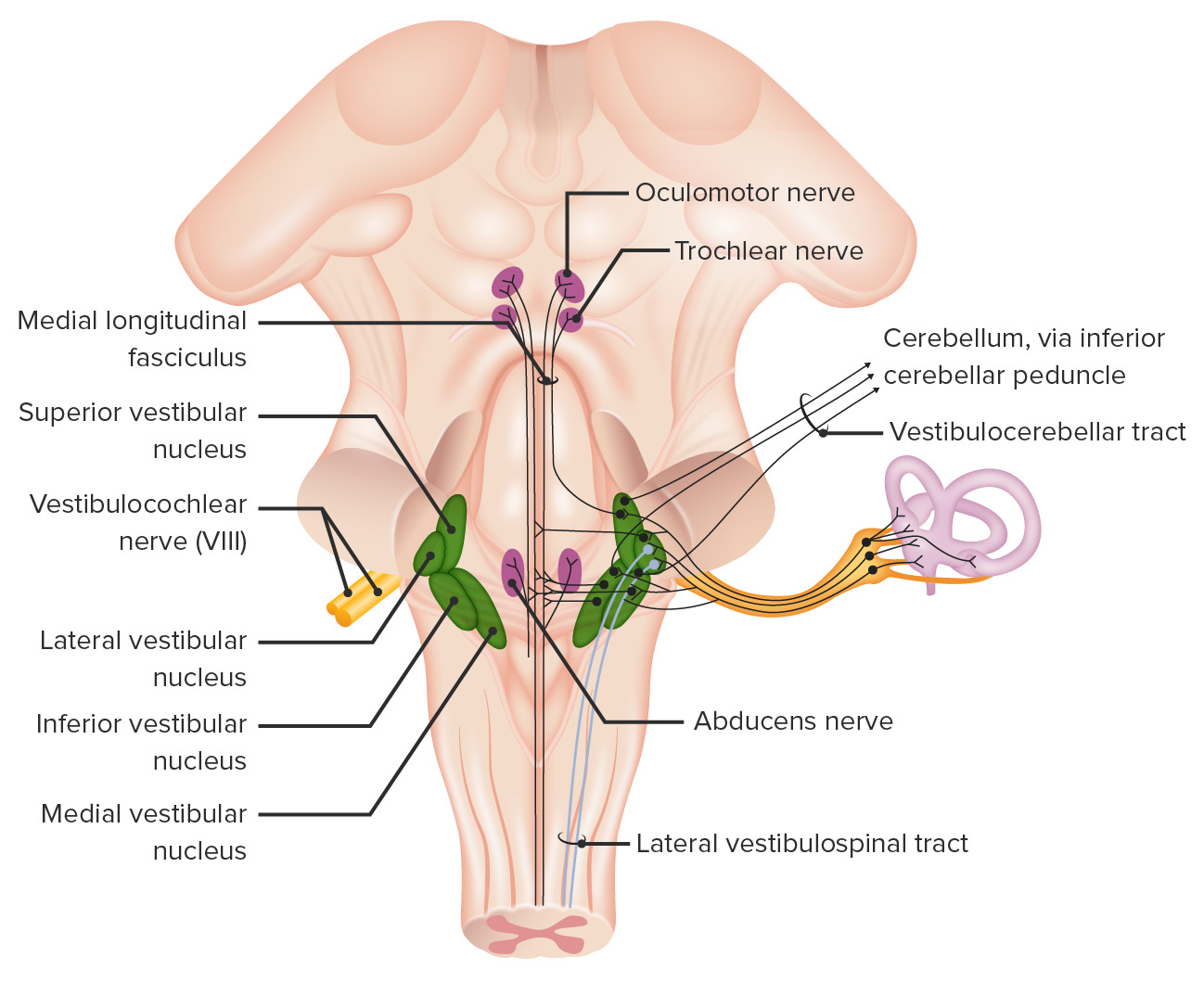Playlist
Show Playlist
Hide Playlist
Hair Cells
-
Slides 10 VestibularSystem 1 BrainAndNervousSystem.pdf
-
Download Lecture Overview
00:01 Now let's take a look at the maculae that are found in the saccule and the utricle. 00:09 The maculae contain hair cells and associated here on their apical region are some structures that we refer to as otoconia. 00:28 These overly the haircells that are shown down in through here. The otoconia are three times denser than the surrounding endolymph. 00:38 Changes in head position, for example tilting or linear acceleration causes displacement of the otoconia and depolarization or stimulation of the hair cells. 00:49 This will then initiates synaptic transmission of the afferent nerve fibers of the vestibular component of cranial nerve number VIII, the vestibulocochlear nerve. 01:06 We also have hair cells in the semicircular canals. These are associated with the cristae ampullaris. 01:17 The cristae ampullaris is characterized by the cupula, very prominent body associated with the cristae ampullaris. 01:24 Here are the hair cells, and in the simplified drawing, you see one hairlike extension are the sensory hair cells. 01:33 In reality, there will be numerous cilia which define these hairlike extensions of the apparatus. 01:44 What will happen here with angular accelaration is let's say you're moving to the right, you're rotating, you're pivoting, what will happen is the endolymph has greater inertia than there's the cupula, and so the endolymph here will push the cupula in this direction causing bending of the haircells and depolarization along the afferent nerve fibers associated with the vestibular nerve. 02:15 And so this will result in synaptic transmission of those afferent nerve fibers.
About the Lecture
The lecture Hair Cells by Craig Canby, PhD is from the course Auditory System and Vestibular System.
Included Quiz Questions
Which of the following is a correct statement about otoconia?
- Otoconia possess more inertia than hair cells.
- Otoconia are located underneath the hair cells.
- Their movement stimulates the endolymph.
- Otoconia move secondary to the movement of hair cells.
- These are the main structural components of the crista ampullaris.
Which of the following would result from right angular acceleration?
- A bending of the cupula leftward
- A bending of the cupula leftward and the bending of hair cells rightward
- A bending of the cupula rightward and the bending of hair cells leftward
- A bending of the cupula rightward
- A bending of hair cells rightward
Customer reviews
3,0 of 5 stars
| 5 Stars |
|
0 |
| 4 Stars |
|
0 |
| 3 Stars |
|
1 |
| 2 Stars |
|
0 |
| 1 Star |
|
0 |
Hello, I usually don't rate lectures, but I had to do it here. The reason of that is that I found the certain video unable to make me understand the structures of the inner ear. Please be more specific and use better images, for example about what otoconia are and their use, the cupule etc. Despite of that I like dr. Candy. Thank you.





